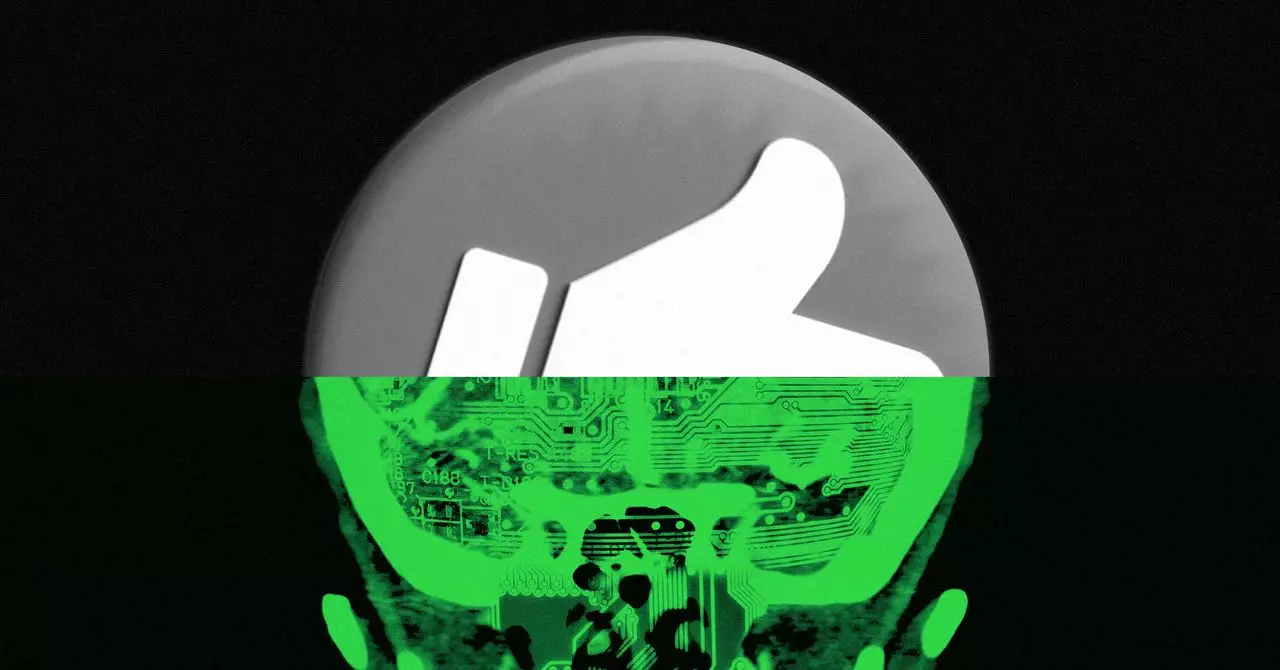In today’s digitally dominated landscape, the simple act of liking a post or content online has blossomed into an invaluable form of data. Max Levchin, co-founder of PayPal and CEO of Affirm, argues that this “liking” data has the potential to play a transformative role in the training of artificial intelligence systems. Traditionally, machine learning models rely on clearly defined reward functions to optimize performance; however, this optimization may lead to results that starkly diverge from human judgment. To mitigate this discrepancy, a technique known as Reinforcement Learning from Human Feedback (RLHF) is employed. This process involves integrating human preferences to guide AI learning, yet the core question remains: where does this human feedback come from, and how can it be sourced efficiently? Levchin contends that the vast reservoirs of liking data possessed by major platforms like Facebook represent a goldmine for developers aiming to enhance AI training. His assertion that the content-related data captured by likes is among the most valuable assets online underscores the pressing importance of understanding how human preferences can influence AI development.
The Future of the Like Button: A Potential Obsolescence
As the narrative around AI evolves, there is a significant possibility that the very tool—like buttons—that once empowered users may become obsolete. AI technology is advancing rapidly, with social media platforms beginning to implement algorithms aimed at predicting user preferences, creating a shift in how user engagement is understood. Facebook’s experiments with AI-driven algorithms signal an exciting yet unnerving turn of events, as they move toward enhancing recommendations without direct input from users. The initial experiments revealed that AI-driven models could successfully optimize for metrics such as watch time, reshaping the fabric of user interaction. In this context, the traditional like button may find itself edged out in favor of more sophisticated predictive mechanisms, leading industry veterans like YouTube co-founder Steve Chen to question its future relevance.
Chatting with Chen elucidates a critical dilemma: while AI may eventually simplify the user experience significantly by accurately predicting content preferences, the like button serves as a straightforward metric to gather insights about changing viewer needs. These fluctuations in interest due to life events ensure that the act of liking content holds intrinsic value, allowing users to communicate their current preferences actively.
The Like Button’s Role in Advertiser Engagement
One of the fundamental functions of the like button, which cannot be overlooked, is its role in the broader ecosystem involving content creators and advertisers. In the tightly woven network of social media, the like acts as a bridge connecting viewers, content providers, and advertisers. This mechanism of engagement is essential, signaling not just consumer interest but also providing a crucial tool for advertisers to gauge the effectiveness of their campaigns. As Chen notes, while AI endeavors to streamline the content discovery process, the like button’s simple and direct appeal may ensure its continued necessity. It offers an uncomplicated yet effective way for users to indicate appreciation—an essential variable for content creators striving for visibility and advertisers seeking targeted engagement.
AI’s Impact on Content Creation and User Interaction
Currently, AI is not just a passive observer in the realm of content engagement; it is actively reshaping not only how preferences are analyzed but also how they are formed. The algorithms behind social media platforms are becoming increasingly sophisticated, dissecting vast datasets to pinpoint what resonates with users. However, this evolving trend raises concerns about homogenization in content consumption, as AI might unintentionally steer audiences toward a narrower range of preferences based on predictive analytics. This phenomenon risks diminishing the diversity of views and experiences represented on digital platforms, essentially leading users into echo chambers of their established likes.
Moreover, there is a need to carefully consider the implications of this shift. In prioritizing predictive models over user expressions of preference, platforms may lose valuable feedback essential for adapting to the nuanced and often fleeting demands of their audience. The like button remains a critical touchpoint that allows for the expression of individuality beyond what an algorithm can anticipate.
In essence, the evolving landscape of the like button in the age of AI prompts a fascinating array of opportunities and challenges. While its future may seem precarious in light of advancing technology, the underlying human requirements for interaction, connection, and feedback persist, anchoring the importance of the like button in the digital age. As AI continues to mold social media interactions, the question about the enduring value of simple human feedback lingers, inviting us to reflect on our digital practices and the very nature of engagement in an increasingly automated world.

